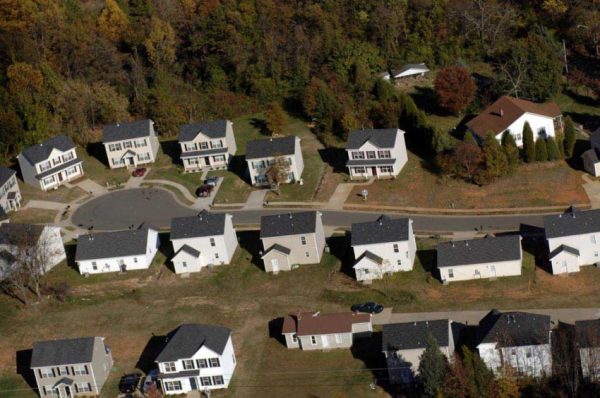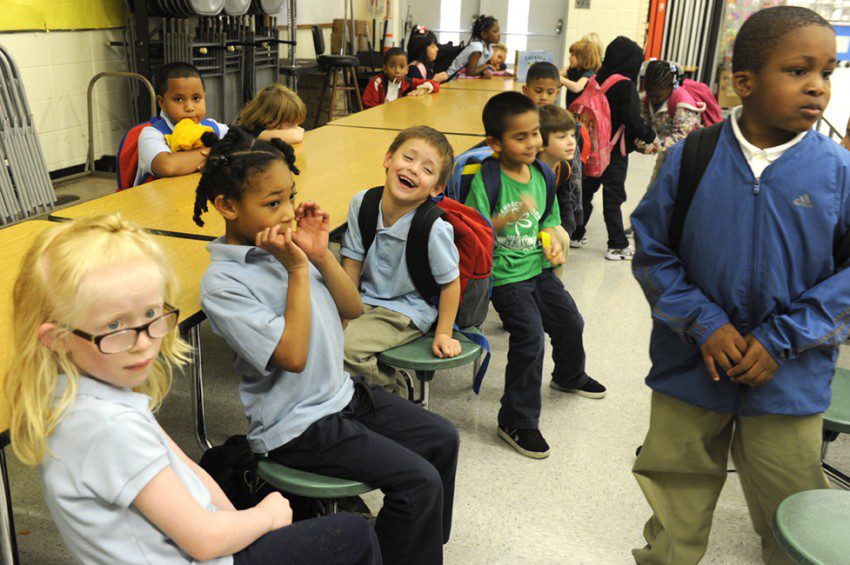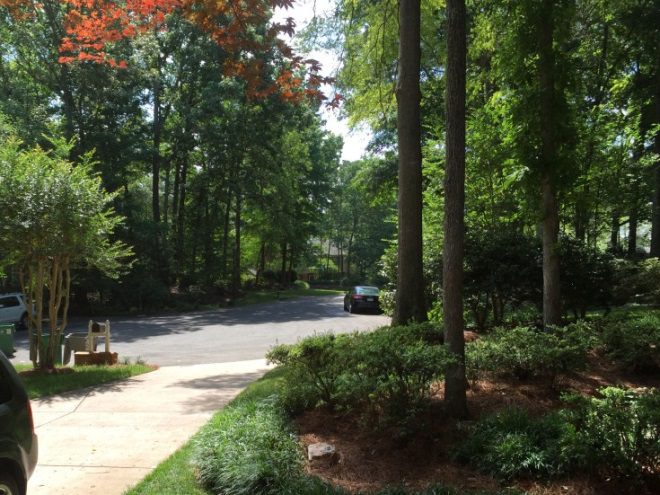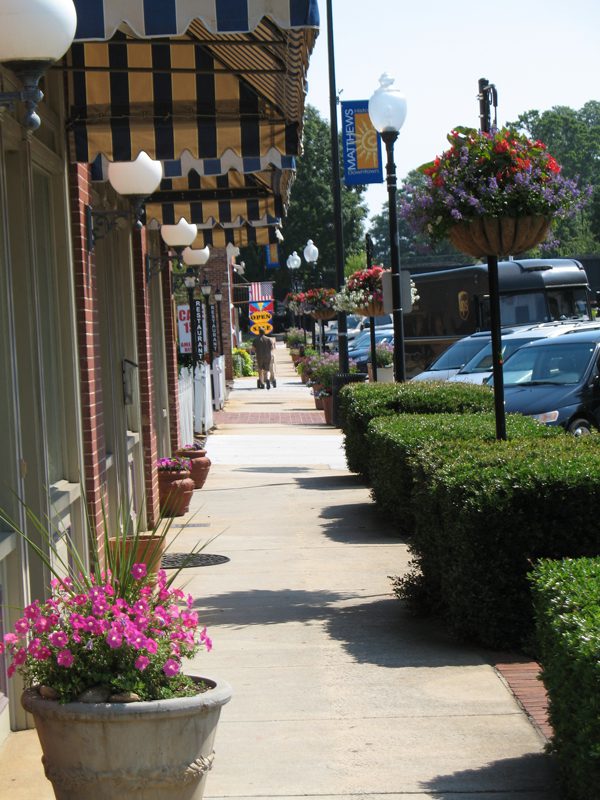Confessions from the cul-de-sac

Three months ago my family and I moved into our first home. Something about buying a house makes you feel like a bona fide adult, and with that come adult decisions. When my husband and I were deciding where in the city we wanted to live, like many young families we fell into the trap that is holding our cities back: providing our child with a good education.
In Charlotte you’ll find the public schools with the highest test scores are in suburban areas on the edge of the city. Decades of socioeconomic trends, racism and segregation are the major causes of this divide. Of course many will tell you test scores are not everything, and they would be right. But when you’re new to a city, don’t know the schools and plan to live in your house for a long time, those test scores and rankings can put your mind (and your real estate agents’) at ease.
I consider myself a true urbanist—devoted to the center city and its surrounding neighborhoods. I was faced with a decision: Live close to downtown, with the schools in the neighborhoods I could afford some of the worst in Charlotte, but where I’d benefit from mixed-uses, sidewalks, beautiful street trees, urban parks, and cultural institutions. Or put education first and move to where the best schools are, and suffer from a car-dependent built environment, zero walkability and the single-use of the single-family house.
I wrestled with this decision more than I wrestled with any other decision of my life. This commitment and investment became so much more than just a house—it became a reflection of my identity.
There are brave urbanists out there who fight this forced expulsion to the suburbs and avoid the education decision. Some tools they use in Charlotte-Mecklenburg:
- Private school. With some schools reaching $20,000 a year for kindergarten, this option is out of reach for many.
- Home school. Me a teacher? It takes a special person to be a teacher, especially a good one, and especially of your own children.
- Take over the PTA. In some neighborhoods like trendy Plaza Midwood, parents are making a pact. They’re enrolling their kids in the local elementary school and then committing to transform the school through volunteering and leadership positions.
- House poor. Some will overextend themselves to buy a house in the most expensive neighborhoods to ensure their children are surrounded by the best peer group.
- The magnet lottery. The technology, language immersion and arts magnet schools accept children from all over the city, but they can’t accept all who apply. If you are one of the lucky ones prepare for the long bus ride, or the long commute.
 These strategies can be unrealistic, impractical, unaffordable, preclude a career or are too risky. Most families opt for the public schools in the ’burbs because, honestly, the ‘burbs ain’t that bad—yet. And even as an urbanist, when I’m up against the aforementioned challenges, I can get used to the large yard and the grocery store that has everything.
These strategies can be unrealistic, impractical, unaffordable, preclude a career or are too risky. Most families opt for the public schools in the ’burbs because, honestly, the ‘burbs ain’t that bad—yet. And even as an urbanist, when I’m up against the aforementioned challenges, I can get used to the large yard and the grocery store that has everything.
The truth is, our cities are up against a challenge. To most people, even with a growing desire for walkable, urban places, the good suburban areas are still nice. For many young families, the weekdays are consumed by school, work, soccer practice, getting dinner on the table and doing it all over again. They can head into the center city on weekends to get their fill of true urbanism, culture and entertainment and then return to the world of affordability and convenience.
Here are more challenges facing our cities:
- Many suburbs can offer much of what the city offers, including the best restaurants, coffee shops and recreation facilities. Although they aren’t walkable, those suburban options can still be convenient, often a short drive away. In Charlotte, some of the most trendy restaurants in urban neighborhoods (Amelie’s in NoDa and Midwood Smoke House in Plaza Midwood for example) are taking advantage of the untapped market in the ’burbs.

- The ever-popular lifestyle center is a development type that ultimately fools people into thinking they live in an urban environment. If you forget that you had to sit in traffic to drive there, walking down a wide, tree-lined sidewalk with outdoor café seating feels nice. Entertainment and community events in a central open space can be reminiscent of small town America.
- Speaking of small towns, even though they have been surrounded by metropolitan sprawl, small towns have survived and are benefiting from the nearby population growth. Downtown Matthews and Davidson are Charlotte’s shining examples.
- If you have to drive everywhere anyway, you might as well enjoy that big ole yard. There is enough room for your pups to run around and for a swing set. It can become a personal haven to relax in after the stressful commute. Even though for people who understand the benefits of a walkable, urban environment it’s an easy choice to sacrifice a big lot—when you have it, it’s still pretty nice.
And now for the kickers:
- We live in a warped market. We’ve been building single-use, disconnected suburbs for a half a century in this country. Even with a documented increase in the desire for dense, walkable, mixed-use neighborhoods, lenders and developers still know that more affordable and less risky suburbs will sell. Since the new, walkable neighborhoods that are built are so scarce and the demand is increasing, that leaves most of them unaffordable. This means people still choose to buy in a conventional suburb, fulfilling the fallacy for lenders and developers that people prefer suburbia.
- Driving still isn’t expensive enough. There will come a day when the price of gas is unaffordable, and technology hasn’t made enough progress to provide us with alternative ways to fuel our car-driven culture. And when that happens, people will swarm back into the cities. Until then, sticker shock at the pump isn’t shocking enough.
When it comes down to it, I have no doubt that everyone loves good places. But because of the factors above, these are harder to come by—planning exists in a political, financial and social context that prohibits us from making changes in our cities fast enough.
If there is one thing we can do that will transform our cities faster than any other planning strategy, it’s fixing our city schools. If we can navigate the socioeconomic inequality and challenges, we will do more for our cities than any planning document or design. While planners and urban designers use the tools of redevelopment, economic development and transit as catalysts of change, we are missing the one piece to the puzzle—improving education.
Putting urban schools on par with their counterparts in the ’burbs will put cities and the suburbs on a much more level playing field. Long-forgotten neighborhoods in the city will open up to new markets. Infill development that takes advantage of existing infrastructure will make new development more affordable and put it in reach of young, middle class families.
And when that happens, the choice for many—especially urbanists like me—will be easy.
Erin Chantry is an urban designer with Stantec’s Urban Places Group in Charlotte. Opinions in this article are the author’s and not necessarily those of the UNC Charlotte Urban Institute or the University of North Carolina at Charlotte.

